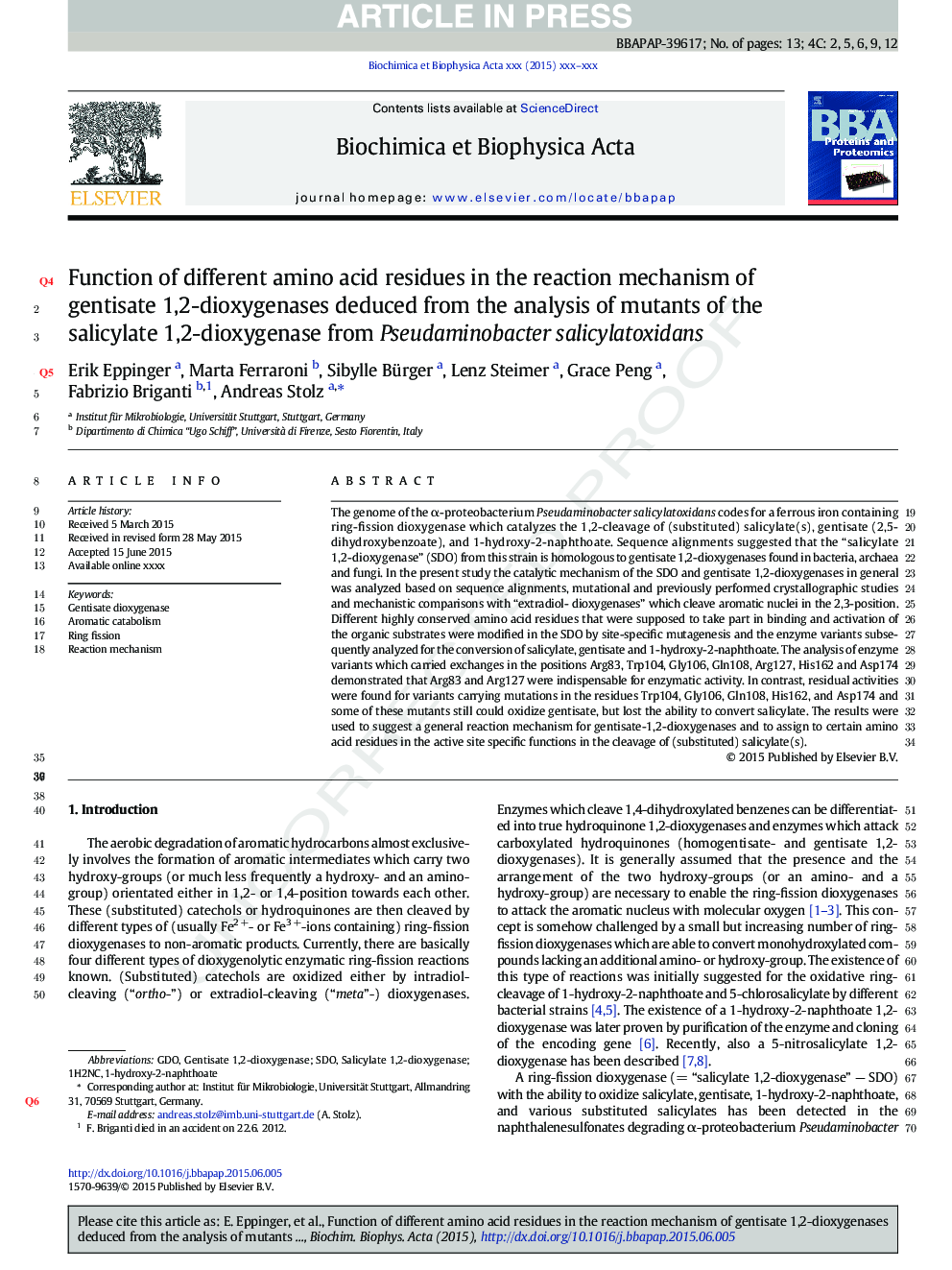| Article ID | Journal | Published Year | Pages | File Type |
|---|---|---|---|---|
| 10536792 | Biochimica et Biophysica Acta (BBA) - Proteins and Proteomics | 2015 | 13 Pages |
Abstract
The genome of the α-proteobacterium Pseudaminobacter salicylatoxidans codes for a ferrous iron containing ring-fission dioxygenase which catalyzes the 1,2-cleavage of (substituted) salicylate(s), gentisate (2,5-dihydroxybenzoate), and 1-hydroxy-2-naphthoate. Sequence alignments suggested that the “salicylate 1,2-dioxygenase” (SDO) from this strain is homologous to gentisate 1,2-dioxygenases found in bacteria, archaea and fungi. In the present study the catalytic mechanism of the SDO and gentisate 1,2-dioxygenases in general was analyzed based on sequence alignments, mutational and previously performed crystallographic studies and mechanistic comparisons with “extradiol- dioxygenases” which cleave aromatic nuclei in the 2,3-position. Different highly conserved amino acid residues that were supposed to take part in binding and activation of the organic substrates were modified in the SDO by site-specific mutagenesis and the enzyme variants subsequently analyzed for the conversion of salicylate, gentisate and 1-hydroxy-2-naphthoate. The analysis of enzyme variants which carried exchanges in the positions Arg83, Trp104, Gly106, Gln108, Arg127, His162 and Asp174 demonstrated that Arg83 and Arg127 were indispensable for enzymatic activity. In contrast, residual activities were found for variants carrying mutations in the residues Trp104, Gly106, Gln108, His162, and Asp174 and some of these mutants still could oxidize gentisate, but lost the ability to convert salicylate. The results were used to suggest a general reaction mechanism for gentisate-1,2-dioxygenases and to assign to certain amino acid residues in the active site specific functions in the cleavage of (substituted) salicylate(s).
Related Topics
Physical Sciences and Engineering
Chemistry
Analytical Chemistry
Authors
Erik Eppinger, Marta Ferraroni, Sibylle Bürger, Lenz Steimer, Grace Peng, Fabrizio Briganti, Andreas Stolz,
